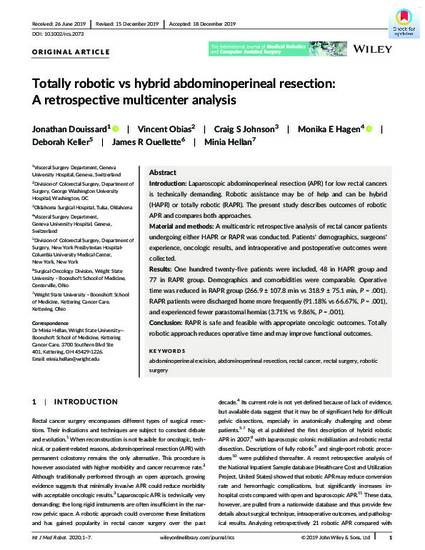
Introduction
Laparoscopic abdominoperineal resection (APR) for low rectal cancers is technically demanding. Robotic assistance may be of help and can be hybrid (HAPR) or totally robotic (RAPR). The present study describes outcomes of robotic APR and compares both approaches. Material and methods
A multicentric retrospective analysis of rectal cancer patients undergoing either HAPR or RAPR was conducted. Patients' demographics, surgeons' experience, oncologic results, and intraoperative and postoperative outcomes were collected. Results
One hundred twenty‐five patients were included, 48 in HAPR group and 77 in RAPR group. Demographics and comorbidities were comparable. Operative time was reduced in RAPR group (266.9 ± 107.8 min vs 318.9 ± 75.1 min, P = .001). RAPR patients were discharged home more frequently (91.18% vs 66.67%, P = .001), and experienced fewer parastomal hernias (3.71% vs 9.86%, P = .001). Conclusion
RAPR is safe and feasible with appropriate oncologic outcomes. Totally robotic approach reduces operative time and may improve functional outcomes.
Available at: http://works.bepress.com/minia_hellan/51/
